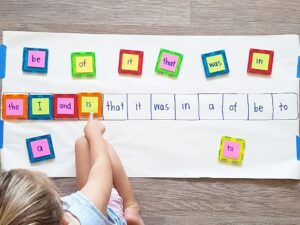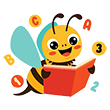Teaching Sight Words
Words that are often used and that pupils learn to recognize “by sight”—that is, without the need for decoding—are known as sight words or high frequency words. Spelling and sounding out many of these words can be challenging because they don’t all follow the same pattern. Building a solid educational foundation for young students requires teaching them sight words.
Children should learn how to spell words correctly because they make up around 75% of the words in print resources for beginning readers. As a result, individuals may focus on meaning and comprehension while reading rather than having to stop and decode every word. starting readers can identify numerous terms in a text thanks to the capacity to automatically recognize starting sight words from appropriate lists. Sight word usage in context has a big impact on sentence meaning, which in turn impacts the story’s overall meaning. Starting young children’s sight word writing exercises helps reinforce the basis.
Teaching Sight Word Lists
The secret to learning sight words is repetition. Young readers should be given numerous chances to read and write each new sight word listed above beginning in kindergarten. One can employ multiple techniques to strengthen the instinctive identification of basic sight words, such as providing children with sight word writing exercises.
• Reading texts including specific sight words repeatedly.
Pronounce the words slowly while indicating their written versions, or assist pupils in pronouncing the words. When applicable, highlight the terms in simple sentences where they appear.
• Using flashcards.
Focusing on a small number of new words at a time is important when teaching sight words. Students will be able to recognize each word right away with practice.
• Work on spelling vocabulary sight words.
Using the Handwriting Practice activity, which also lets you print spelling worksheets for writing practice in multiple type types, have kids write words and read them out multiple times.
• Creating a word wall.
As new words are added to your sight word vocabulary lists, add them to the wall. The list of high frequency words that is displayed on the wall can be cheered or chanted by pupils each day. Frequent exposure to a word not only helps cement its meaning in the child’s mind, but it also makes it more easily available for discussion in the classroom or during free-writing exercises.


